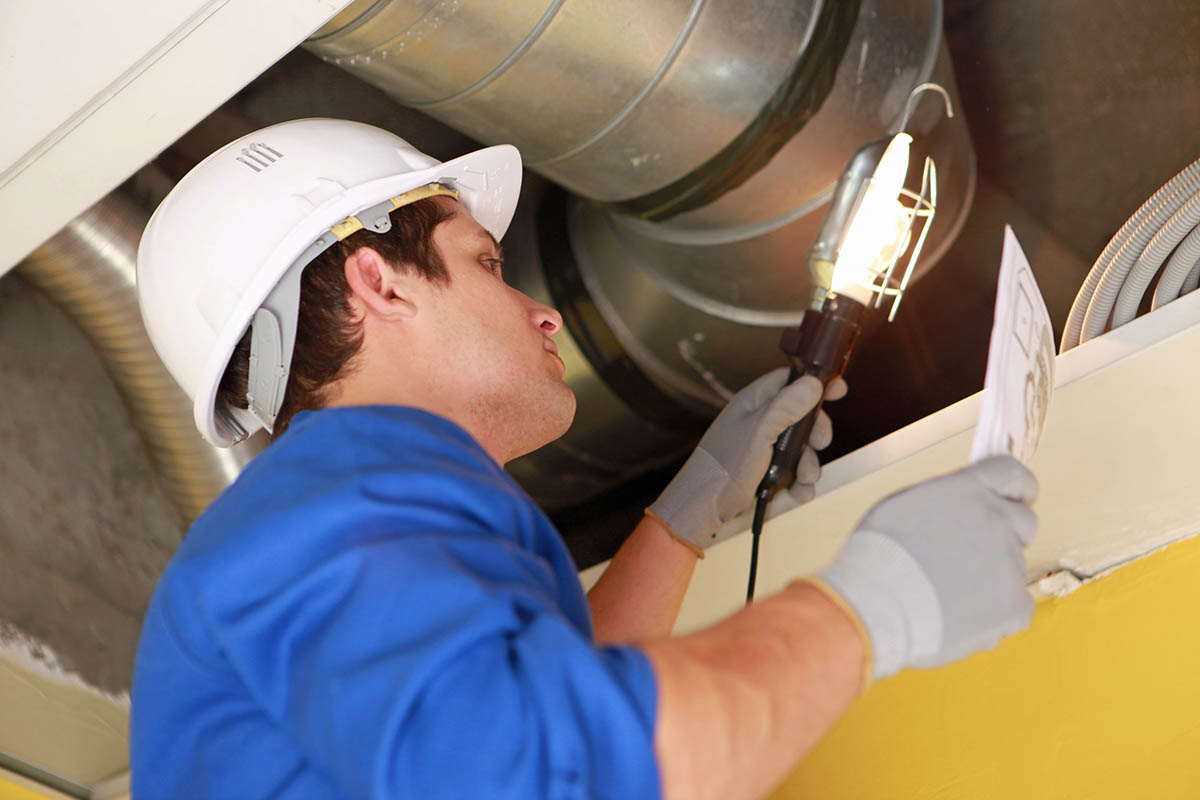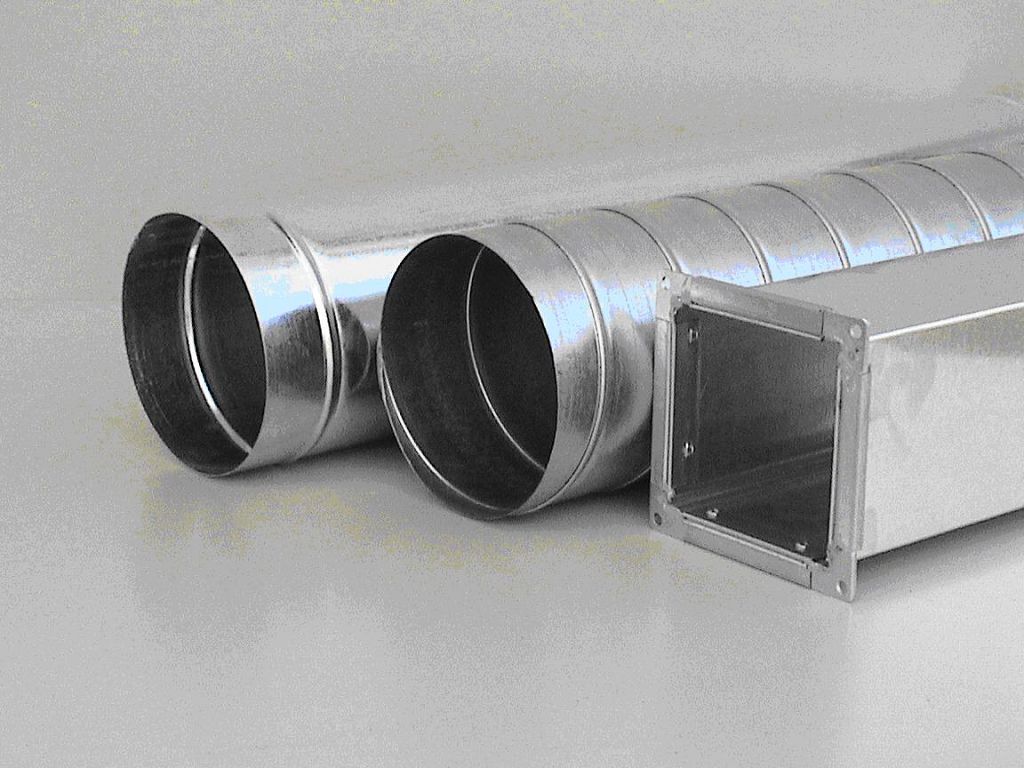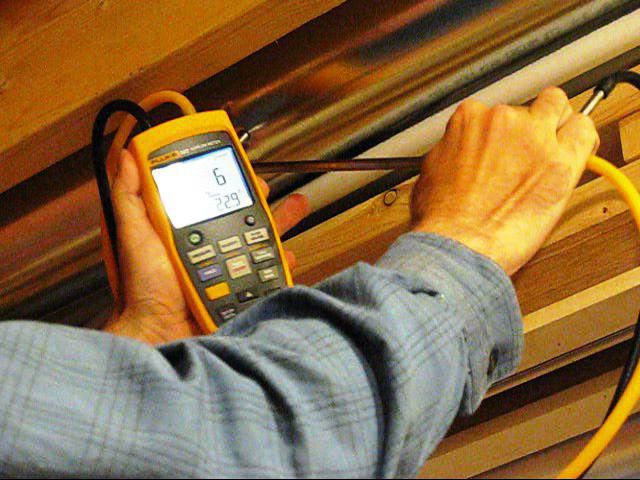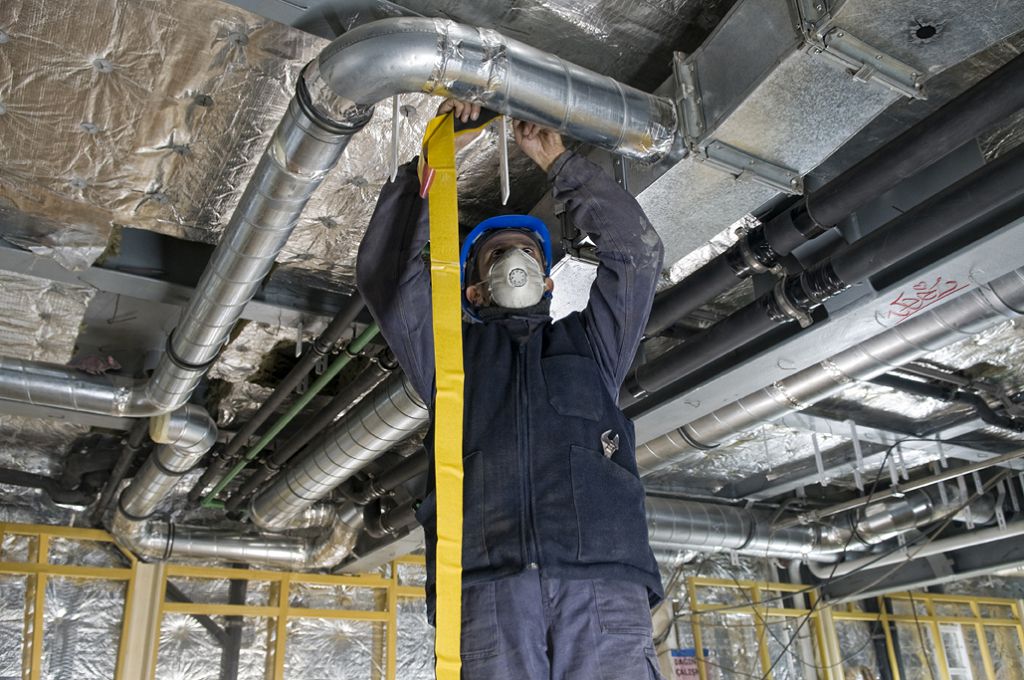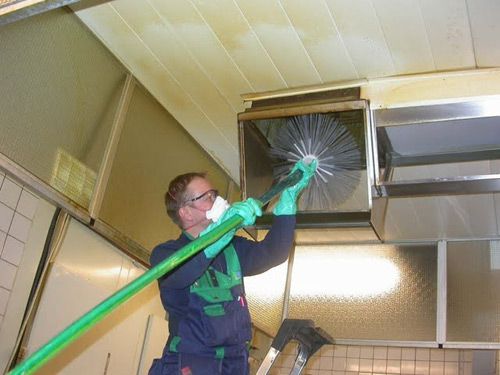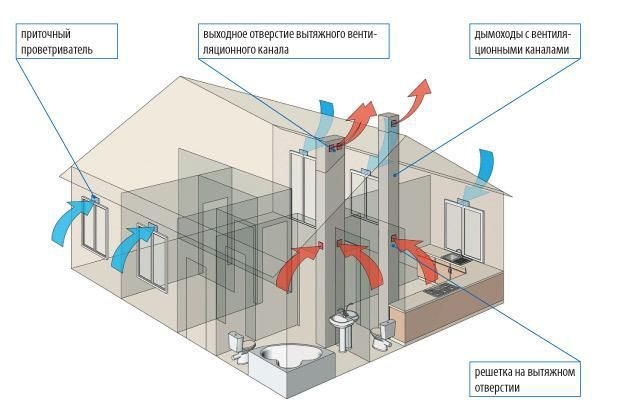The correct air circulation process is ensured by a normal ventilation system in the room, one of the criteria for determining which is the frequency of air exchange.
The ventilation process in the premises is carried out due to the fact that polluted air is excluded from the working area, thanks to the natural exhaust ventilation system of the duct type.
Air exchange rate
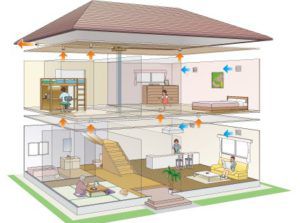
The nature of the air exchange in the room directly depends on the type of building:
- industrial purpose;
- "Change house";
- commercial premises.
For each type of room, a regulated indicator of the frequency of air exchange is presented.
The calculation of air exchange takes into account the type and characteristics of the equipment used in the room:
- Production type of fans;
- Household ventilation system;
- Integral exhaust ventilation system;
- Application of recuperation, recirculation or PVA;
- Specialized climatic conditioners.
Frequency rates
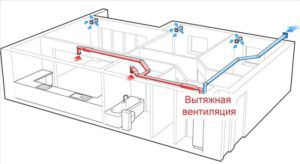
When arranging a ventilation system, you will need to calculate the amount of air in the working area for an hour; for this, several basic methods for determining the norm are distinguished. Determining the frequency of air exchange, the most reliable and relevant method is based on the choice of the rate indicator, based on the type and purpose of the building.
According to the table of calculated data, the multiplicity indicator is found by the formula:
L = Vpom * KR (m3 / h),
in which L is the data of a full-fledged air exchange process; Vpom - the calculated volume of the building, m3; KR - multiplicity index (tabular).
The norms for the purpose of buildings are determined based on the data of the specialized design documentation of buildings and structures, which indicate the frequency of air exchange:
- SNiP 2.08.01-89;
- SNiP 2.08.02-89;
- SNiP 2.09.04-87;
- SNiP 2.04.05-91.
Table 1. Air data and rates of the air exchange process in residential buildings (calculated) (SNiP 2.08.01-89 *)
| Purpose of the building | Information "t" | Multiplicity index | |
| Hood, (m3/ h) | |||
| Flat | 18 (20) | 3 | |
| Living space with "t" less - 31 ° С | 20 (22) | 3 | |
| Kitchen: with electrical appliances with equipment, on gas | 18 | 60 75 90 | |
| Bathroom (separate) | 25 | 25 | |
| Washroom (separate) | 18 | 25 | |
| San. node + shower | 25 | 50 | |
| Shower compartment (connected) | 25 | 5 | |
| Washroom (connected) | 16 | 25 (for 1 urinal) | |
| Dressing area | 18 | 1,5 | |
| Corridor in an apartment block building | 18 | — | |
| Flight of stairs | 16 | — | |
| Premises for holding cultural events | 18 | 1 | |
| Room for washing and cleaning | 15 | 7 | |
| Compartments for organizing and storing linen, personal items, sports equipment and household goods | 12 | 0,5 | |
| Medical Isolator | 20 | 1 | |
| Repair boxes for elevators | 5 | 0,5 | |
| Garbage collection department in panel apartment buildings and dormitories | 5 | 1 |
For residential buildings and structures located in the corner part, such a multiplicity value should be taken in the calculations - 2 degrees higher than the norm specified in the table.
In the compartment of the machine lift, the "t" air exchange should not exceed 40 degrees in summer.
For elderly people and citizens with disabilities, an air exchange rate different from the norm is provided.
Advanced air exchange calculations
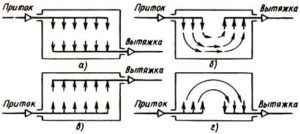
To check the indicators, an in-depth calculation of air exchange is proposed. In the equation of the specific calculation, data are used for 1 hour, the basis is taken "V" of the premises, provided for 1 subject (along the normal):
L = L1 * NL (m3 / h),
where "L1" is the estimated volume (normal) for one subject, m3 / h * person; "NL" is the total number of subjects in the building at the same time.
The standards assume a regulated air value, in m3 / h:
- "20" - with minimal activity;
- "45" - with light physical exertion;
- "60" - with increased activity.
Also, the calculated data allow you to determine and select the most optimal climatic equipment, taking into account the data of the room on the nature of ventilation and air conditioning:
- specific calculation for one unit of equipment;
- determination of the calculated indicator per unit area.
Features of calculating air exchange in a room
Before arranging the ventilation system in the room, it is necessary to determine exactly how the air exchange process will take place. So, in most cases, a direct air discharge through the wall to the outside is provided. This is due to an axial fan or a system of branched air ducts, using a special ventilation pipe or centrifugal volute.
Based on the obtained values, equipment is selected for the room.
Also of no small importance is the ratio of the overall dimensions of the entire system to its specific amount of passed material, and air losses per each running meter of the system.
The pressure related to losses in the ventilation system is directly related to the air exchange flow in the room duct system. This characteristic plays an important role that must be taken into account when calculating the indicator and choosing climate technology.
With an air exchange system of 1000 m3 / h, the most optimal size "D" would be an air duct system of 200 - 250 mm.
As a result, using a large-diameter air duct, a fairly low resistance indicator and minimal losses in the performance of the equipment are formed.

